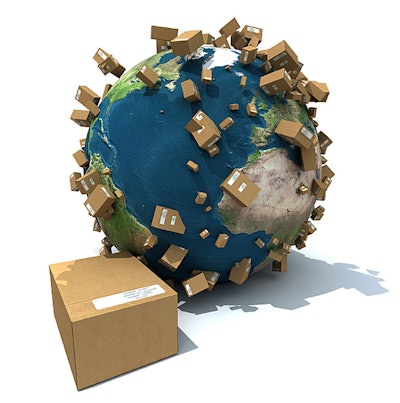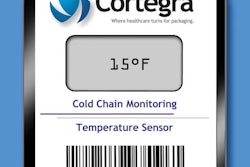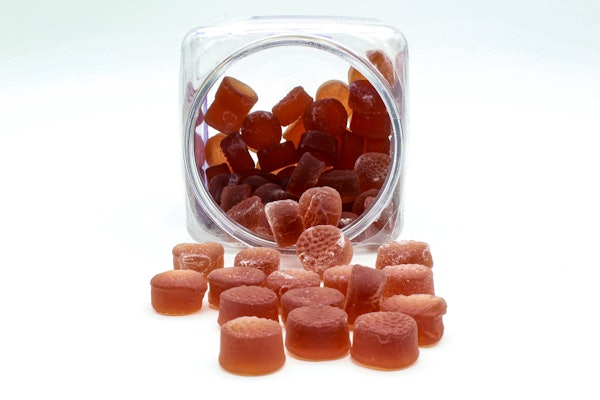
Any deviation from this temperature means you risk losing thousands of dollars in product and R&D time.
This kind of shipment doesn't have to induce fear or stress. It's simply a matter of choosing the right packaging solution for your cold chain, with an emphasis on a cooling method, or phase-change material (PCM). In addition to price and payload protection factors, it's becoming increasingly important to consider what kind of impact your packaging solution and PCM will have on the environment. Some PCMs leave a minimal carbon footprint, while others may be around for generations to come.
Technically, every object on the earth is a phase-change material. Add heat to a solid, it becomes a liquid. Add heat to a liquid, and it becomes a gas. Adding heat to a gas produces plasma (such as lightning). Even rocks, with enough applied heat, turn into liquid - what we know as lava.
A phase-change material in packaging is defined as an organic or inorganic substance that acts as your payload's heating or cooling agent. As your payload's temperature increases or decreases (depending on several factors, from ambient external temperature to the type of insulation you use), your PCM works to maintain a stable, consistent temperature for the duration of its trip.
There are several commonly used phase-change materials within the shipping industry, and each comes with its own benefits and drawbacks. It also should be noted that no PCM alone is effective in maintaining temperature, as they typically come as part of an entire packaging system. As the key temperature regulator for packaging systems, however, it's important to choose your PCM carefully. Here are five simple categories to keep in mind when evaluating PCMs:
1. Payload protection temperature range. If your sensitive clinical trial needs to be kept at 14° C, with acceptable excursions ranging from 11° C to 17° C, can you be sure your PCM will maintain that narrow temperature range?
2. Time durations. Will your packaging solution maintain a consistent temperature for 24 to 48 hours? Or with a package going to Dubai, are you safe for up to 120 hours?
3. Ease of use. Does your packaging solution provide sufficient room for and protection of your payload for the duration of the trip? For instance, using dry ice as a PCM may be effective for materials that need to be kept frozen (below -18° C). Once the ice sublimates, however, there's now room for the payload to move around and possibly become damaged.
4. Expense. Price alone shouldn't dictate your choice in packaging solution or PCM - a more expensive option may be the best suited for your shipping needs. Reusable solutions also may appear more expensive, but based on cost per use may be more affordable.
5. Environmental impact. What is the PCM composed of, and is it renewable? Is it toxic or non-toxic? Can you reuse it over and over?
With these considerations in mind, let's review some common packaging industry PCMs:
• Water-based gel packs. While these solutions are among the most inexpensive PCMs available, ice can melt quickly, and gel packs can sometimes provide inconsistent temperature control. Gel packs also may need to be conditioned hours before use to avoid thermally shocking the payload. They are, however, non-toxic, and intact gel packs may be used several times.
• Dry ice (frozen CO2). Inexpensive and readily available (but not reusable), dry ice works well with deep frozen payloads traveling short distances. Using dry ice as a PCM requires careful packing to ensure payloads remain safe even as the dry ice sublimates.
• Vegetable oil-based PCMs. These relatively new-to-market PCMs can achieve virtually any temperature range and maintain it for extended durations of time (currently available vegetable oil-based PCMs exceed 120 hours). They're also biodegradable, non-toxic, and experience no thermal degradation after 20,000 uses.
• Petroleum-based PCMs. Directly derived from crude oil, the price of petroleum-based PCMs fluctuates as often as the price of gasoline. Depending on the petroleum derivative used to create the PCM, most are toxic. Because they are typically volatile, disposal of them may be difficult.
• Heavy water (deuterium oxide). Ideal for refrigerated (2-8° C) payloads because it freezes at 3.82° C, heavy water is an effective PCM but must be used cautiously; may be difficult to obtain and be costly.
• Eutectic salts. A generic term for many materials that contain a salt in solution at a concentration that yields the lowest freezing point, eutectic salts can vary in safety, price, and effectiveness, based on their composition. There may also be disposal or customs issues, based on the material used.
Sustaining more than temperature
It may not be commonplace yet in your company to consider environmental impact when evaluating products or services, but that's likely to change. With many of today's top brands implementing corporate social responsibility (CSR) initiatives, the reusability of your packaging solution or phase-change material may be required soon. Europe, China, and Japan all are implementing packaging waste laws around the use of reusable or recyclable packaging - and the United States may not be far behind. With more than one-third of the nation's landfills already full of EPS, it's time we all consider sustainability when thinking about temperature-controlled packaging solutions.
--By Eric Lindquist, President of Entropy Solutions, Inc., a thermal technology development company.
This kind of shipment doesn't have to induce fear or stress. It's simply a matter of choosing the right packaging solution for your cold chain, with an emphasis on a cooling method, or phase-change material (PCM). In addition to price and payload protection factors, it's becoming increasingly important to consider what kind of impact your packaging solution and PCM will have on the environment. Some PCMs leave a minimal carbon footprint, while others may be around for generations to come.
Technically, every object on the earth is a phase-change material. Add heat to a solid, it becomes a liquid. Add heat to a liquid, and it becomes a gas. Adding heat to a gas produces plasma (such as lightning). Even rocks, with enough applied heat, turn into liquid - what we know as lava.
A phase-change material in packaging is defined as an organic or inorganic substance that acts as your payload's heating or cooling agent. As your payload's temperature increases or decreases (depending on several factors, from ambient external temperature to the type of insulation you use), your PCM works to maintain a stable, consistent temperature for the duration of its trip.
There are several commonly used phase-change materials within the shipping industry, and each comes with its own benefits and drawbacks. It also should be noted that no PCM alone is effective in maintaining temperature, as they typically come as part of an entire packaging system. As the key temperature regulator for packaging systems, however, it's important to choose your PCM carefully. Here are five simple categories to keep in mind when evaluating PCMs:
1. Payload protection temperature range. If your sensitive clinical trial needs to be kept at 14° C, with acceptable excursions ranging from 11° C to 17° C, can you be sure your PCM will maintain that narrow temperature range?
2. Time durations. Will your packaging solution maintain a consistent temperature for 24 to 48 hours? Or with a package going to Dubai, are you safe for up to 120 hours?
3. Ease of use. Does your packaging solution provide sufficient room for and protection of your payload for the duration of the trip? For instance, using dry ice as a PCM may be effective for materials that need to be kept frozen (below -18° C). Once the ice sublimates, however, there's now room for the payload to move around and possibly become damaged.
4. Expense. Price alone shouldn't dictate your choice in packaging solution or PCM - a more expensive option may be the best suited for your shipping needs. Reusable solutions also may appear more expensive, but based on cost per use may be more affordable.
5. Environmental impact. What is the PCM composed of, and is it renewable? Is it toxic or non-toxic? Can you reuse it over and over?
With these considerations in mind, let's review some common packaging industry PCMs:
• Water-based gel packs. While these solutions are among the most inexpensive PCMs available, ice can melt quickly, and gel packs can sometimes provide inconsistent temperature control. Gel packs also may need to be conditioned hours before use to avoid thermally shocking the payload. They are, however, non-toxic, and intact gel packs may be used several times.
• Dry ice (frozen CO2). Inexpensive and readily available (but not reusable), dry ice works well with deep frozen payloads traveling short distances. Using dry ice as a PCM requires careful packing to ensure payloads remain safe even as the dry ice sublimates.
• Vegetable oil-based PCMs. These relatively new-to-market PCMs can achieve virtually any temperature range and maintain it for extended durations of time (currently available vegetable oil-based PCMs exceed 120 hours). They're also biodegradable, non-toxic, and experience no thermal degradation after 20,000 uses.
• Petroleum-based PCMs. Directly derived from crude oil, the price of petroleum-based PCMs fluctuates as often as the price of gasoline. Depending on the petroleum derivative used to create the PCM, most are toxic. Because they are typically volatile, disposal of them may be difficult.
• Heavy water (deuterium oxide). Ideal for refrigerated (2-8° C) payloads because it freezes at 3.82° C, heavy water is an effective PCM but must be used cautiously; may be difficult to obtain and be costly.
• Eutectic salts. A generic term for many materials that contain a salt in solution at a concentration that yields the lowest freezing point, eutectic salts can vary in safety, price, and effectiveness, based on their composition. There may also be disposal or customs issues, based on the material used.
Sustaining more than temperature
It may not be commonplace yet in your company to consider environmental impact when evaluating products or services, but that's likely to change. With many of today's top brands implementing corporate social responsibility (CSR) initiatives, the reusability of your packaging solution or phase-change material may be required soon. Europe, China, and Japan all are implementing packaging waste laws around the use of reusable or recyclable packaging - and the United States may not be far behind. With more than one-third of the nation's landfills already full of EPS, it's time we all consider sustainability when thinking about temperature-controlled packaging solutions.
--By Eric Lindquist, President of Entropy Solutions, Inc., a thermal technology development company.


















